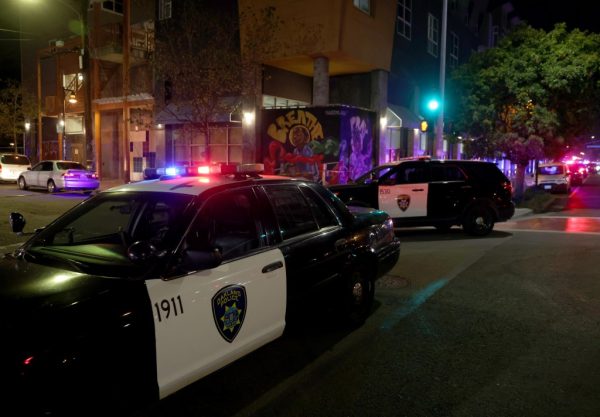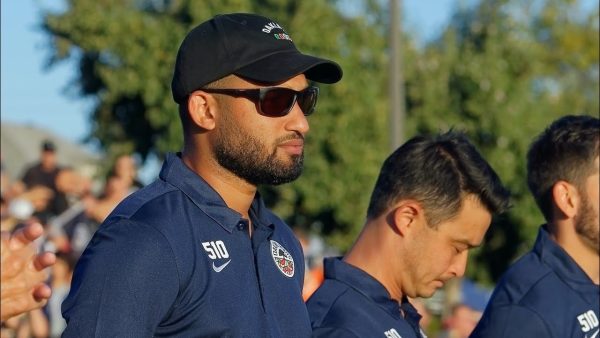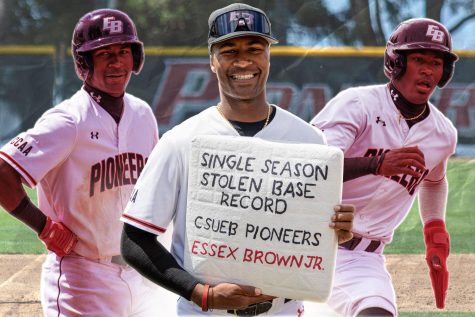Female candidates misrepresented in media
July 18, 2019
Aggressive, attractive, and indecisive – journalists use these words in their headlines and articles about the Oakland-native, California State Senator and Democratic Presidential candidate Kamala Harris. Strong, intelligent, and promising – these words are used to write about her male counterparts.
The United States has never had a female president. It may never, especially because of the differences in these few words. The media coverage between male and female politicians in America is completely different. It shows a harsh, underlying truth about our nation.
“Women and politics do not go together in America for some reason,” Dr. Elizabeth Bergman, professor, and chair of the Department of Political Science at California State University, East Bay said. “It’s the big elephant in the room. What is the deal with the way we view women in this country?”
By announcing her campaign for the 2020 presidency, Kamala Harris, a woman of color, has garnered a large amount of attention from the media. However, the media’s coverage has the tendency to not be based on her merits, skills, or qualifications. Instead, it focuses on the superficial – exposing unnecessary elements of her personal life. Male Democratic candidates rarely face this same challenge.
The public relies on the media to give them information about political candidates. If the media is painting a picture of Harris that makes her seem too weak, trivial, and unfit for the job, that translates to her not getting votes. A cycle develops, and we may never see a female President in office.
The misrepresentation of female presidential candidates is not new, nor exclusive to Harris. American media has a long history of portraying female politicians negatively and under a very critical light.
Female candidates receive more attention to their “appearance, personality, and family than men,” according to a 2018 study by Political Parity, a political research organization. If a male candidate’s flaws are mentioned, they are usually just brushed off. But if a female candidate’s flaws are mentioned, then she is seen as unworthy of Americans’ votes.
Harris has been in the news and public eye before. She started her political career in 2003 as San Francisco’s District Attorney, became the Attorney General of California in 2010, and a California State Senator in 2017. She has had her fair share of local news coverage, but once she became a presidential candidate, her reach expanded. She is now receiving more national coverage and name recognition than ever before.
Harris’ love life, what music she partied to in college, her marijuana habits, and aggressive personality, to name a few, have all been made public news. Some of the headlines read: “Trump’s New ‘Nasty’ Woman,” “Kamala Harris says she has smoked pot,” and “The Two Faces of Kamala Harris.”
The Los Angeles Times published a story about Harris going shopping in South Carolina along her campaign trail, where she tried on a sequined jacket. She bought the jacket, thinking it was the perfect thing to wear to Pride in San Francisco. Fox News published a story about her affair with former San Francisco mayor, Willie Brown. CNN published another story about how Harris wants to decriminalize sex work. Now people are asking questions about her promiscuity and morals.
The media holds onto an ideology of patriarchy very strongly. We can see it in the different ways that they describe the candidates, and what they choose to write about them. While journalists write about Harris going out shopping and dwell on her past lovers, they are also writing about her male peers proposing new policy plans or making elaborate speeches to support their campaigns.
Sadly, that does not bode well for Harris and her female counterparts in the presidential race.
“Kamala might as well drop out. The rest of the people can go home now, because the media is teeing it up. Who are they setting the table for? They are making it unfair by the way they are covering the other candidates,” said Bergman.
The coverage of Harris can be characterized as well as a kind of intersectional discrimination. Coined by the black feminist scholar Kimberlé Williams Crenshaw, intersectionality refers to the reality that women of color are more likely susceptible to criticism than others. They face a “double negative” because they are considered two minorities: women, and a person of color. Harris is categorized under both of these minorities.
“People of color in U.S. media have always had a different kind of story told about us,” Manoucheka Celeste, Professor of African American Studies and Gender, Women’s Studies, and Sexualities Research at the University of Florida and award-winning author, said in an interview. “I don’t think it is a matter of more scrutiny. Instead, it is about maintaining and creating a particular script.”
Celeste said that the scripts become codified images. They are maintained over time, repeated and emphasized through the media. As a result, people hold them to be the ultimate truth. This makes an impact on their decisions, such as voting.
The media also makes decisions about what is newsworthy, a concept often called gatekeeping. It refers to the media’s huge responsibility to decide what is and is not “news.” At the end of the day, so many different things are happening in the world, it is difficult to document them all at once. The media is responsible for selecting what has the most value and importance to the public.
However, what the media sees as “valuable” and “important” may not be the same as public perceptions. The media relies heavily on being a for-profit business. Without selling papers, advertisements, and subscriptions, they do not have the funding that they need. To do that, the media needs to produce news that catches people’s attention and makes them want to buy.
“The media is not very responsible, and it’s not very surprising. They’re a business. The for-profit press is doing what makes business sense, but it’s not always good for the country,” Bergman said. “How can you do something about a problem, if you don’t even know anything about it?”
To combat the differences in news coverage between male and female politicians, and the current coverage that is misrepresenting Kamala Harris and also other female candidates such as Elizabeth Warren, we can better educate ourselves. We can be aware that it is happening. We can understand that the media may not have our best interests at heart and choose to read the news that does not misrepresent people.
“Some of us have more myths projected onto our bodies than others. This is why it is so important that we all learn where these stories come from and think through how to unravel them so that we can see people’s truths,” said Celeste.















